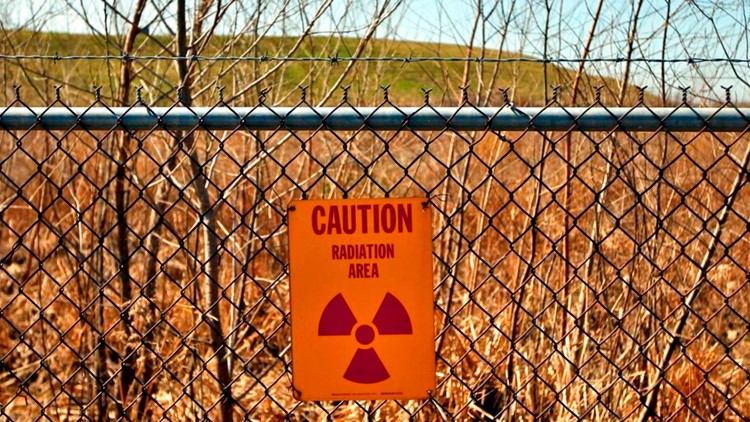BRIDGETON, Mo. — Nuclear waste buried in a Missouri landfill that sits near an underground smolder is more extensive than first believed, and is part of the reason the $205 million Superfund project that began nearly four years ago has been delayed, an Environmental Protection Agency spokesman said Friday.
The EPA announced a plan in September 2018 to remove some of the radioactive material at West Lake Landfill in the St. Louis suburb of Bridgeton, and cap the rest. The waste sits a few hundred yards from an adjacent landfill that has dealt with an underground smolder for more than a decade.
The EPA originally estimated the project would take about four years but now offers no timetable. The delay has prompted concerns from neighboring residents and local and federal political leaders.
EPA spokesman Ben Washburn said in an email that the initial timeline was based “on the best available data from site investigations” prior to the 2018 announcement. But data collected at the project “resulted in the need for additional investigation."
Washburn said the additional locations of “radiologically impacted material” are no closer to the smolder than previously known locations. He said it is not uncommon at Superfund sites to find additional contamination.
EPA Region 7 Administrator Meg McCollister, in a March 15 letter to U.S. Rep. Ann Wagner, said she plans to hold a congressional briefing in late March or early April in Washington ”to clarify our path forward to closure and to recommit to steady, timely progress” toward the cleanup.
She offered no new estimate on when the project will be completed.
“As I am sure that you are aware, this is one of the most complicated landfill remedies in the history of this Agency,” McCollister wrote.
Dawn Chapman lives two miles from the landfill site and leads the activist group Just Moms STL. She said the EPA for years downplayed the threat at the landfill, so she finds the delay particularly alarming.
“In the beginning, they told us we were crazy," Chapman said. “They told us there was nothing to worry about in this site, it was no big deal. Just for once, come out and tell us the truth.”
The EPA said in 2017 that testing found no radioactive contamination in homes near the landfill.
Washburn said the ongoing design work at the landfill “is primarily focused on determining where and how to excavate radiologically impacted material,” specifically where to take it, how to get it there and how to construct the cap on what will remain on-site.
The mess in Bridgeton dates back to the Cold War. Weapons-grade uranium was refined at Mallinckrodt Chemical Works in St. Louis as part of the Manhattan Project, the World War II-era program that produced the first nuclear weapons. The atomic waste was illegally dumped at the landfill in Bridgeton in 1973.
Meanwhile, a smolder was discovered underground in 2010 at the adjacent Bridgeton Landfill. The cause isn’t known, but the resulting odor prompted a lawsuit by then-Attorney General Chris Koster in 2013. The lawsuit was settled in June 2018 when current and former landfill owners agreed to pay $16 million.
The EPA initially wanted to cap all of the nuclear waste, but residents largely opposed that plan and wanted it removed, prompting the remove-some, cap-the-rest plan announced in 2018.
The initial estimate for the project was $205 million, with the landfill's owner shouldering the cost along with other "responsible parties,” which include the U.S. Department of Energy and Exelon Corp. of Chicago, whose subsidiary once owned uranium processor Cotter Corp.
Chapman said the EPA should be holding a public forum in Bridgeton to discuss what they've found. She plans to travel to Washington when McCollister updates the congressional delegation.
“We deserve to sit there and hear the truth about what we’ve been allowed to live next to for almost 50 years in this community,” Chapman said.



